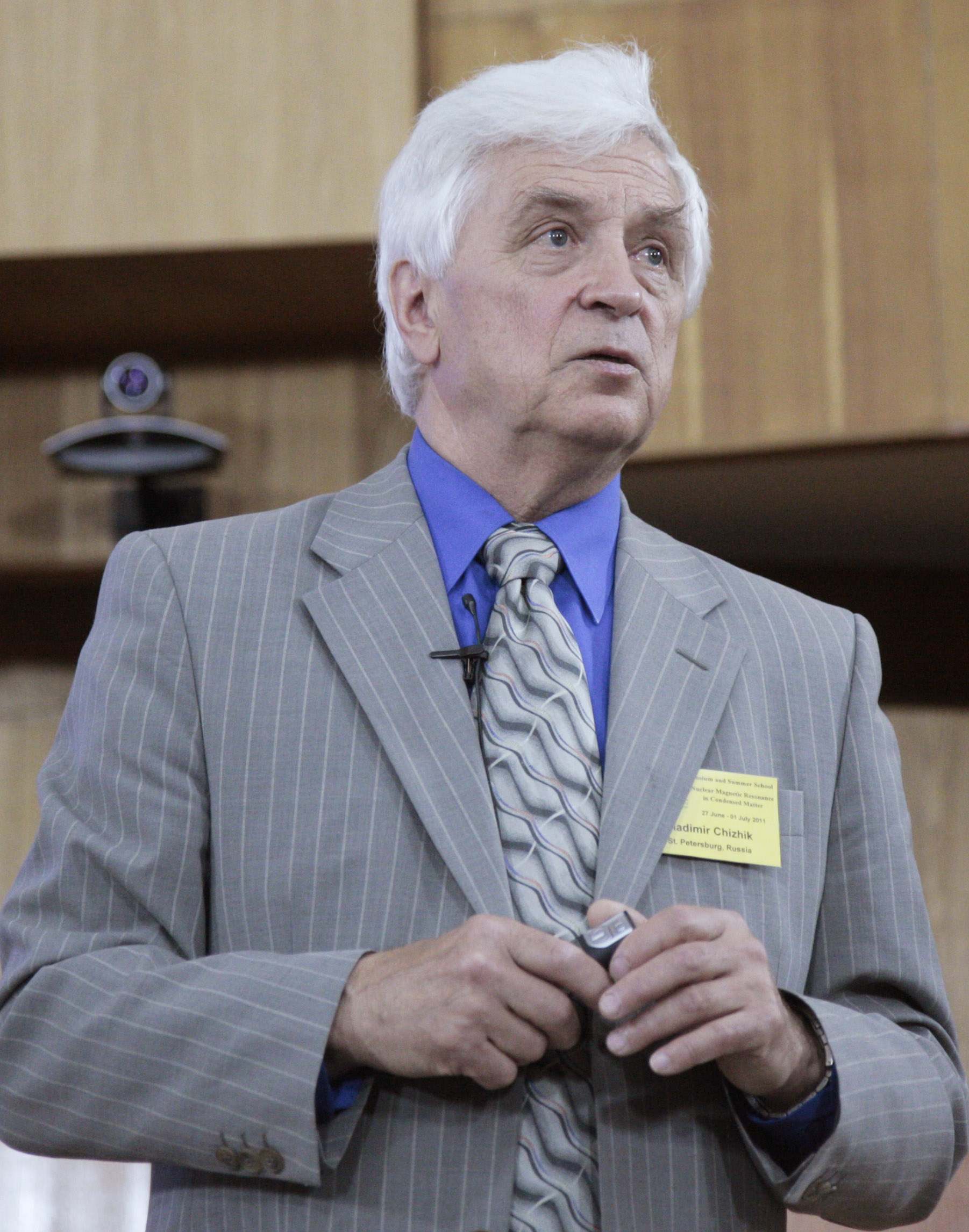
Prof. Vladimir Chizhik
Saint Petersburg State University, Russia
Title: MAGNETIC RESONANCE IMAGING OF DISTRIBUTION OF PHOSPHORUS NUCLEI USING DOUBLE RESONANCE 1H – 31P
Abstract:
Keywords: magnetic resonance imaging, spin echo double resonance,
indirect imaging
Images in
vivo of the spatial distribution of phosphorus metabolites are of
significant interest for biology and medicine. One of the most informative
methods of spatial imaging is the magnetic resonance imaging (MRI). However,
the obtaining of MRI for phosphorus
nuclei is prevented by the low intensity of nuclear magnetic resonance (NMR)
signals from 31P nuclei, namely, in 15 times less than from 1H
nuclei (protons) at equal concentrations. Therefore, phosphorus MRI is practically
not realized, although NMR spectroscopy 31Р is quite developed. In the work presented a
method of the spatial distribution mapping of phosphorus-containing compounds using
the proton NMR with the additional irradiation at the frequency of nuclear
magnetic resonance of 31Р nuclei is
described. The technique is based on the spin echo double resonance and can be
used to obtain MR images for nuclei other than protons, connected with them by the
indirect spin-spin interaction with a constant J. To construct the 31Р image the following pulsed NMR experiment is performed: (i) the
standard proton spin echo is obtained using a pulse sequence of 90˚-τ-180˚-τ-echo; (ii) the additional 180˚-pulse at
the NMR frequency of 31Р nuclei,
acting simultaneously with the 180˚-pulse at the proton frequency, is used.
Under the condition τ = 1/(2J), the spin-echo
from protons, interacted with 31Р, disappear. The difference of
images obtained with and without the additional 180˚-pulse allows one to create
the image of the distribution of 31Р nuclei interacted with protons.
A model experiment was carried out with a
trimethylphosphate sample on the homebuilt laboratory NMR- scanner operated at the 7 mT magnetic field. The radiofrequency pulses
at two independent frequencies were generated using a Midrange two-channel
synthesizer based on the AD9833 direct digital synthesis. The control of the
synthesizer, as well as the creation of pulse sequences, collection and
processing of data, are carried out using a personal computer with the NI PCI-6229 multifunctional control and registration
board. All control and processing programs are
created in the environment LabView.
The study has shown that in the presence
of indirect spin-spin interaction 1H-31P the developed
method allows one to obtain the mapping of the spatial distribution of phosphorus
without direct registration of NMR signals from the 31P nuclei with sensitivity
typical for proton images.
Biography:
Vladimir Chizhik, Professor of the Saint Petersburg State University, was born in 1937 in Leningrad (now Saint Petersburg), graduated from Leningrad University in 1959; 1966 – Ph. D.; 1982 – Dr. Sci. (specialities: Radiophysics and Molecular Physics). In the Saint Petersburg (Leningrad) State University he consistently held the positions of junior researcher, senior researcher, professor. In 1993 V. Chizhik organized the new “Chair of Quantum Magnetic Phenomena” and was the Head of it during 20 years. The scientific areas of V. Chizhik are nuclear vagnetic resonance (NMR) in condensed matter, NMR-relaxation, microstructure of liquid systems, NMR in magnetic field of the Earth, magnetic resonance imaging (MRI). He is a member of the Committee of the European Groupement AMPERE (Atomes et Molécules Par Études Radio-Électriques).